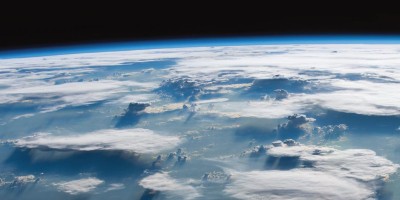Water that has been carried deep into the Earth by oceanic plates in subduction zones, can influence earthquakes and volcanic eruptions. Three-dimensional images of electrical resistivity derived from electromagnetic geophysical data provide new constraints on the distribution, transport, and storage of water in the Cascadia subduction zone.

References
Wang, K. & Trehu, A. M. Invited review paper: Some outstanding issues in the study of great megathrust earthquakes—the Cascadia example. Journal of Geodynamics 98, 1–18 (2016). A review article on the Cascadia subduction zone.
Gomberg, J., Cascadia 2007 and beyond working group. Slow-slip phenomena in Cascadia from 2007 and beyond: A review. Bulletin 122, 963–978 (2010). A review article on ETS, with focus on Cascadia.
Wannamaker, P. E. et al. Segmentation of plate coupling, fate of subduction fluids, and modes of arc magmatism in Cascadia, inferred from magnetotelluric resistivity. Geochemistry, Geophys. Geosystems 15, 4230–4253 (2014). An article that presents previous MT interpretations of 2D profiles in Cascadia.
Wells, R. et al. Geologic history of Siletzia, a large igneous province in the Oregon and Washington coast range: Correlation to the geomagnetic polarity time scale and implications for a long-lived Yellowstone hotspot. Geosphere 10, 692–719 (2014). An article on the geology and tectonic history of Cascadia.
Bostock, M. The Moho in subduction zones. Tectonophysics 609, 547–557 (2013). A seismic perspective on fluids in subduction zones with some focus on Cascadia.
Additional information
Publisher’s note Springer Nature remains neutral with regard to jurisdictional claims in published maps and institutional affiliations.
This is a summary of: Egbert, G. D. et al. Fluid transport and storage in the Cascadia forearc influenced by overriding plate lithology. Nat. Geosci. https://doi.org/10.1038/s41561-022-00981-8 (2022).
Rights and permissions
About this article
Cite this article
Geophysical imaging of fluids in the Cascadia subduction zone. Nat. Geosci. 15, 607–608 (2022). https://doi.org/10.1038/s41561-022-00984-5
Published:
Issue Date:
DOI: https://doi.org/10.1038/s41561-022-00984-5
- Springer Nature Limited


